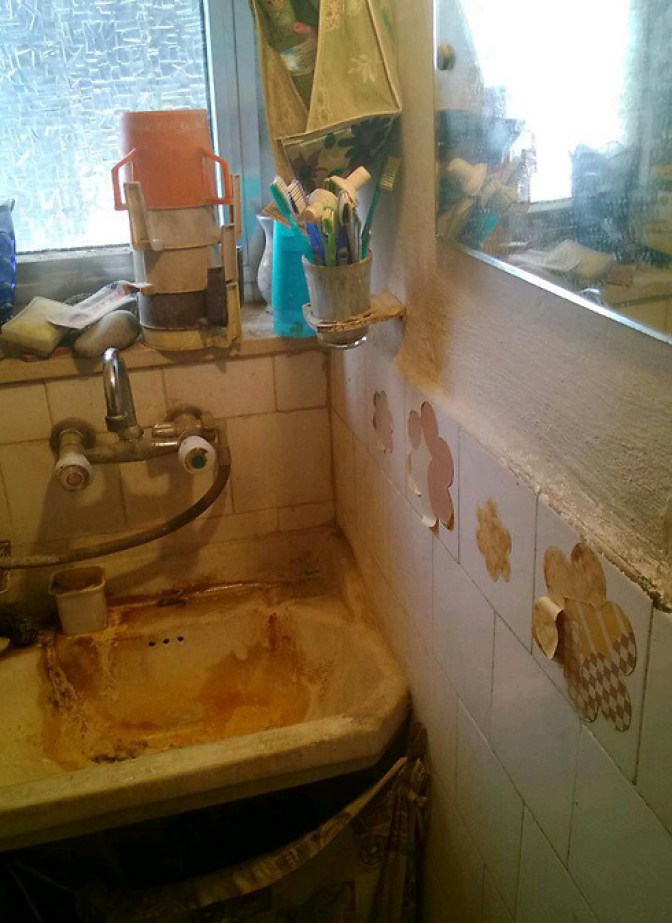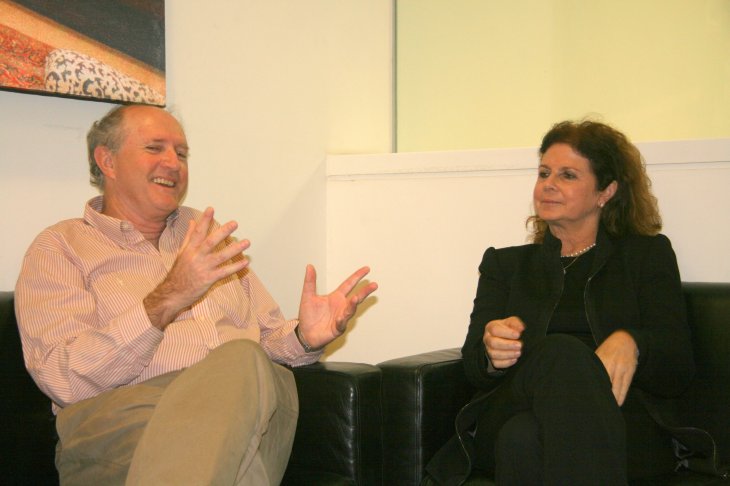Journalist charged with spraying ‘Actual Nazi’ on a statue in Canada highlights Ukraine’s distortion of its complicity in Nazi crimes
By Dr. Efraim Zuroff and Prof. Per Anders Rudling
(First published in The Times of Israel)
Police in Edmonton Canada recently brought charges in the vandalization of a monument honoring Roman Shukhevych located near the city’s Ukrainian Youth Unity Complex. In December 2019, someone wrapped the Shukhevych statue in red tape and scrawled “Nazi scum”, on the memorial. Two years later, it was again defaced, with the inscription “Actual Nazi”, while “Nazi Monument 14th Waffen SS” was spraypainted on a memorial to “The Fighters for Ukrainian Freedom” in a local Ukrainian cemetery.

According to Edmonton police, the culprit was a local left-wing journalist, Duncan Kinney, who carried out these acts before “breaking” these scoops on his outlet, “The Progress Report”, described on its website as a “platform for reporting and analysis of Alberta’s politics, social movements, and media.” Earlier this month, Kinney appeared in court on a charge of vandalism and may also face an additional count of “mischief to religious property.”

The accused vandal’s identity has drawn a great deal of attention – less so the fact that the monuments do indeed honor mass murderers. At the outset of Operation Barbarossa in the summer of 1941, Roman Shukhevych commanded the Nachtigall Battalion, a volunteer unit operating under the orders of the Organization of Ukrainian Nationalists (OUN), as a subunit commanded by the German Abwehr special operations unit. In other words, he was an actual Nazi collaborator.
His OUN-dominated military formation served in German uniform, and its soldiers participated in the brutal Lviv pogrom. In 1942, Shukhevych commanded the Schutzmannschaft Battalion 201, a Ukrainian auxiliary police formation serving under Heinrich Himmler’s Higher SS and Police Leader (Höhere SS- und Polizeiführer, HSSPF) which carried out brutal pacification operations in Belarus. From 1943, after defecting German service, he served as supreme commander of the Ukrainian Insurgent Army (UPA), which carried out systematic massacres of Polish and Jewish civilians.

Following the popular revolutions in 2004-05 and 2013-14 against pro-Russian Viktor Yanukovich, the Ukrainian government invested significant efforts in the rehabilitation and glorification of Roman Shukhevych, together with Stefan Bandera, both leaders of the OUN whose men were actively involved in the mass murder of many thousands of Jews and other innocent civilians, primarily Poles.
This kind of historical distortion came back to haunt Ukraine when Russian President Vladimir Putin spun his web of disinformation to justify waging war. In February, Putin declared that his country was going to invade Ukraine to “denazify” the country. He did not elaborate on what he meant by this accusation, but it was met by almost universal ridicule or at least serious skepticism. Not only is Ukraine a democratic state that has had several democratic power transitions, but in 2019 it elected a Jewish president, Volodymyr Zelensky.
Yet like many other East European post-Communist states, Zelensky’s predecessors pursued memory policies that sometimes clashed with the facts of the Holocaust. In particular, local collaboration in the Holocaust has remained the rawest of nerves in post-Soviet Ukraine. An undigested past, combined with the rehabilitation of historical actors involved in the Holocaust plays into Putin’s hands as he seeks to grossly misrepresent democratic Ukraine as a neo-Nazi state. It is a reminder that the failure to engage candidly with the difficult episodes of the past carries political liabilities.

Countries afflicted with this tendency do not deny that the Holocaust took place, rather, they create a selective version at odds with the historical record. They do this by spinning a false narrative of the events of the Holocaust to downplay or outright erase the highly significant role played by local collaborators in the implementation of the “Final Solution.” While the situation differed across the region, in many parts of Eastern Europe collaboration included participation in systematic mass murder.
There is also an attempt to equate Communist and Nazi crimes, often by “inflation” – not only in the use of the term “genocide”, but also in overstating the victim tally. Moreover, this use of competitive suffering often emphasizes the role played by Jewish Communists as a way to counter inquiries into local participation in carrying out the Holocaust.
These countries glorify the activities of those who fought against the Soviets and turn them into national heroes, even if these individuals actively collaborated with the Nazis in annihilating Jews during the Holocaust.
Eventually, there is pressure for a memorial day for all the victims of totalitarian regimes (Nazi and Communist), which blurs these distinctions and render International Holocaust Memorial Day redundant.
Depending on its history during the Shoah (Holocaust), each post-Communist Eastern European country has its own unique version of Holocaust distortion that determines which aspects they emphasize and cultivate.
In some cases, the narrative adopted by a country has been developed during the Cold War by activists in their respective diasporas. These expat communities are strongly influenced by radical nationalists, many with a history of collaboration during World War II, who fled to escape prosecution by the Communists. Thus the Ukrainian community in Canada has had a significant influence on the Holocaust narrative adopted in Kyiv, and actively fought against the efforts of the Canadian government to prosecute Shoah perpetrators who emigrated to Canada. Ukrainians constituted one of the most numerous and politically organized ethnic communities in Canada; their vociferous opposition to denaturalization and deportation is a key factor in the abysmal failure of the Canadian government to successfully deport alleged Nazi criminals.

In Canada, however, the glorification of Shukhevych had begun long before the demise of the Soviet Union. The Edmonton monument lately in the headlines was erected in 1973 by the League for the Liberation of Ukraine, a front organization of the Bandera wing of the OUN, partially funded by Canadian taxpayers as part of the Canadian policies of multiculturalism, introduced by Liberal PM Pierre Trudeau in 1971. That defaced monument to “The Fighters for Ukrainian Freedom” was erected by the “Brotherhood of the Former Combatants of the First Ukrainian Division of the Ukrainian National Army” (the name the 14th Grenadier-Division der Waffen-SS adopted in the final days of World War II before surrendering to the British), in 1976.

In light of Shukhevych’s biography, these monuments are deeply troubling.
The outcome of the vandalism case remains to be seen. Many in the Ukrainian Canadian community treat Shukhevych as a hero, and themselves as victims of hate crimes, lamenting that their community has endured Nazi labels and insisting this was part of the disinformation campaign by the Russians. Shukhevych’s biography and the role of the OUN and UPA during the Holocaust show that such claims are spurious.
Needless to say, the distortions do not justify Russia’s current criminal war of aggression against Ukraine, but they are a reminder of how manipulations of the historical record carry political liabilities.
Russia’s current war crimes call out for an open, candid, and honest engagement with war crimes, to prevent their distortion.
About the writers:

Dr. Zuroff is the chief Nazi hunter of the Simon Wiesenthal Center and the director of the Center’s Israel Office and Eastern European Affairs.

Prof. Rudling is Associate Professor of History in Lund University (Sweden), as well as a Wallenberg Academy Fellow (2019-2024)
While the mission of Lay of the Land (LotL) is to provide a wide and diverse perspective of affairs in Israel, the Middle East and the Jewish world, the opinions, beliefs and viewpoints expressed by its various writers are not necessarily ones of the owners and management of LOTL but of the writers themselves. LotL endeavours to the best of its ability to credit the use of all known photographs to the photographer and/or owner of such photographs (0&EO).
























































